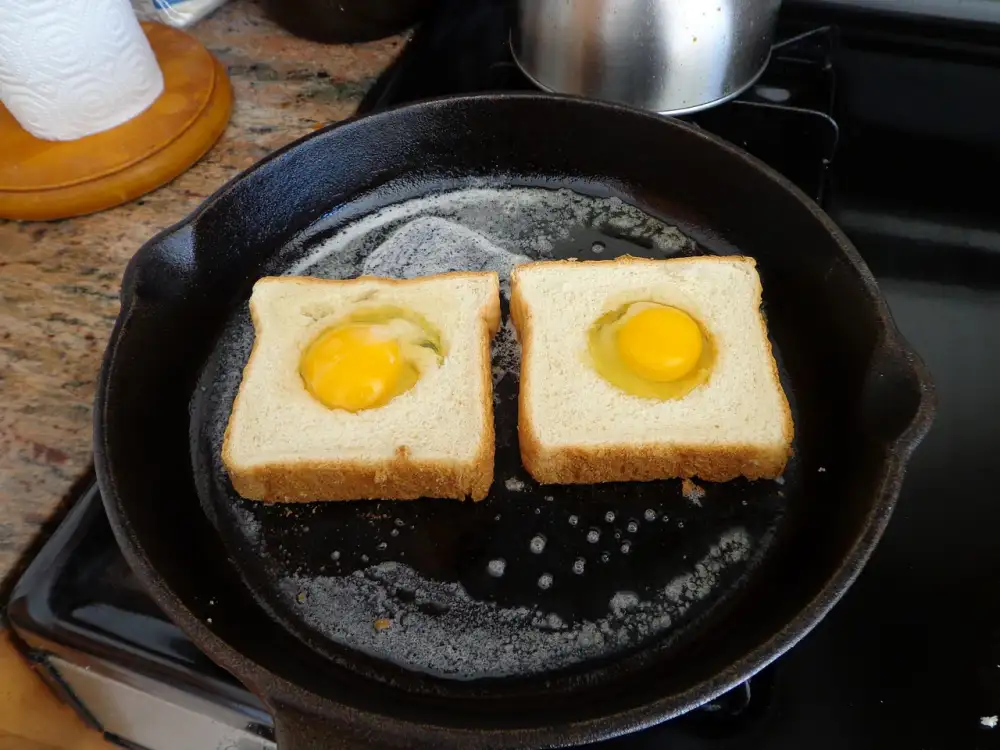Restore the Glory: A Step-by-Step Guide on How to Clean a Rusty Cast Iron Skillet at Home

Introduction: A well-seasoned cast iron skillet is a prized possession in any kitchen. Its ability to evenly distribute heat and create a beautiful sear makes it a go-to tool for professional chefs and home cooks alike. However, over time, these skillets can develop rust, which not only affects their performance but also poses health risks. That's why it's crucial to maintain a clean cast iron skillet. In this step-by-step guide, we will show you how to restore the glory of your rusty skillet and ensure its longevity in your culinary adventures.
Gather necessary supplies for rust removal
To successfully remove rust from your cast iron skillet, you will need to gather a few essential supplies. First and foremost, you will need a stiff brush or scrubber. This will help you to effectively scrub away the rust from the surface of the skillet. Additionally, you will need white vinegar, which is known for its rust-removing properties. Make sure to have enough vinegar to soak the skillet in later on. Lastly, you will need salt and oil. The salt acts as an abrasive agent while the oil helps to restore the skillet's natural seasoning. With these supplies in hand, you are ready to begin the restoration process!
Step 1: Scrub the skillet with a stiff brush
To begin the process of restoring your rusty cast iron skillet, the first step is to scrub it with a stiff brush. This will help to remove any loose rust or debris from the surface of the skillet. Make sure to use a brush that has firm bristles and is specifically designed for cleaning cast iron.
Start by running warm water over the skillet to wet it slightly. Then, using the stiff brush, scrub the entire surface of the skillet in circular motions. Apply some pressure to ensure that you are effectively removing any rust or residue.
Continue scrubbing until you have covered all areas of the skillet, including the bottom and sides. Pay extra attention to any stubborn rust spots, as they may require more vigorous scrubbing.
Once you are satisfied with your scrubbing efforts, rinse off the skillet under warm water to remove any loosened rust particles. It is important to note that you should avoid using soap at this stage, as it can strip away the seasoning on your cast iron skillet.
After rinsing, inspect the skillet for any remaining rust spots. If necessary, repeat this step until all visible rust has been removed. Once you have successfully completed this step, you are ready to move on to the next phase of restoring your cast iron skillet.
Step 2: Create a vinegar solution and soak the skillet
Once you have scrubbed off the loose rust from your cast iron skillet, it's time to tackle the remaining stubborn rust. To do this, you will need to create a vinegar solution.
Start by filling your sink or a large container with equal parts water and white vinegar. Make sure there is enough liquid to fully submerge the skillet. The acidity of the vinegar will help break down the rust and make it easier to remove.
Carefully place the skillet into the vinegar solution, ensuring that it is completely immersed. Allow it to soak for at least one hour, but if the rust is particularly stubborn, you may need to leave it overnight.
During this time, the vinegar will work its magic and start dissolving the rust. You may notice bubbles forming on the surface of the liquid – this is a good sign that the process is working.
After soaking, remove the skillet from the vinegar solution and give it another gentle scrub with a brush or sponge. This will help loosen any remaining rust particles.
Remember to wear gloves during this step as vinegar can be acidic and irritate your skin. Additionally, make sure to dispose of the used vinegar solution safely according to local regulations.
Now that you have successfully removed most of the rust from your cast iron skillet, let's move on to step 3: scrubbing with salt and oil.
Step 3: Scrub the skillet with salt and oil
After soaking the skillet in the vinegar solution, it's time to give it a thorough scrub. Sprinkle a generous amount of coarse salt onto the surface of the skillet. The salt acts as an abrasive that helps remove any remaining rust particles.
Next, pour a small amount of vegetable oil onto the salted surface. Using a clean cloth or paper towel, vigorously scrub the skillet in circular motions. Apply some pressure to ensure that all rust spots are targeted.
Continue scrubbing until you no longer feel any rough patches or see any rust flakes coming off. The combination of salt and oil will work together to lift away stubborn rust stains while also conditioning the cast iron.
Once you're satisfied with the results, rinse off the skillet under warm water. Make sure to remove all traces of salt and oil residue. Pat dry with a clean towel or place it over low heat on your stovetop to evaporate any remaining moisture.
By following this step, your cast iron skillet will be well on its way to being restored to its former glory.
Step 4: Rinse and dry the skillet thoroughly
After scrubbing the skillet with salt and oil, it is important to rinse off any remaining residue. Rinse the skillet under warm running water, making sure to remove all traces of salt and oil. Use your hands or a sponge to gently scrub away any stubborn spots. Once the skillet is thoroughly rinsed, pat it dry with a clean towel or paper towels. Make sure to remove all moisture from the surface of the skillet to prevent any future rusting.
Step 5: Season the skillet to prevent future rusting
After successfully removing the rust from your cast iron skillet, it is crucial to season it properly to protect it from future rusting. Seasoning creates a protective layer on the skillet's surface, preventing moisture from coming into direct contact with the iron.
To season your skillet, start by preheating your oven to 375°F (190°C). Apply a thin layer of vegetable oil or flaxseed oil all over the skillet, including the handle and exterior. Make sure to use a paper towel to remove any excess oil.
Next, place the skillet upside down on the middle rack of your oven. This will allow any excess oil to drip off during the seasoning process. To catch any drips, you can place a baking sheet or aluminum foil on the lower rack.
Let the skillet bake in the oven for about an hour. This will help polymerize the oil and create a smooth non-stick surface. After an hour, turn off the oven and let the skillet cool completely inside before removing it.
Once cooled, your cast iron skillet is now seasoned and ready for use. The more you cook with it, the better its seasoning will become. Remember to clean it gently after each use using only hot water and a soft brush or sponge.
By following these steps and regularly maintaining your cast iron skillet's seasoning, you can enjoy its cooking benefits for years to come while keeping rust at bay.
Conclusion: Enjoy your restored cast iron skillet for years to come. By following these simple steps, you can bring back the glory of your rusty cast iron skillet and ensure its longevity. Regular maintenance and proper seasoning will keep it in top-notch condition, allowing you to create delicious meals with ease. So, embrace the artistry of food and savor the flavors that only a well-seasoned cast iron skillet can provide. Happy cooking!
Published: 29. 12. 2023
Category: Home



